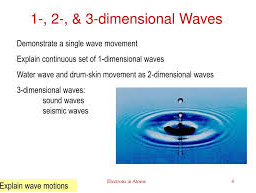What is thermal expansion with types and examples
We explain what thermal expansion is, the types that exist, and we give several examples
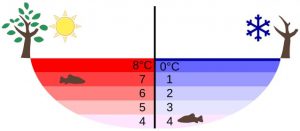
What is thermal expansion?
The thermal expansion or thermal expansion is increased dimensions of the bodies when heated. It happens with almost all materials, except some that expand when frozen, like water and acetic acid, for example.
The explanation for the phenomenon lies in the thermal agitation of the particles. According to the kinetic theory, the molecules that make up substances are not at rest, but in permanent motion.
In solids the particles oscillate around a fixed point, but with increasing temperature, the amplitude of the oscillation increases, and as a consequence the object expands.
This property of materials to expand with temperature is used in many applications, for example in liquid thermometers and bimetallic strips, these bend in a certain way when the temperature increases and in this way circuits can be opened or closed at your convenience.
However, sometimes thermal expansion causes inconvenience, as in the case of resins used to treat dental cavities. These resins expand with heat faster than teeth, causing discomfort when ingesting hot beverages.
If thermal expansion is not taken into account when designing, the part or object may lose functionality when the temperature rises for some reason.
Types of thermal expansion
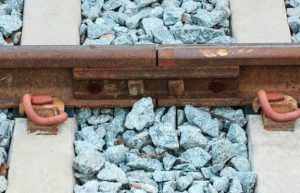
- The most frequent, occurring when increases the material simply its dimensions with temperature and is called expansion or thermal expansion .
- Negative thermal expansion , if the substance shrinks when heated .
According to the predominant dimensions in the object, the thermal expansion can be linear, superficial or volumetric . For example, if you have a thin wire or bar, the object is elongated and the dilation is linear, since primarily the length is modified.
On the other hand, when a thin sheet is heated, its surface area increases, while a three-dimensional object increases its volume . For each of these cases there is a simple equation that is true in a good temperature range.
The change in the length of a rod, bar, or thin wire is denoted as ΔL and is directly proportional to the change in temperature ΔT and the original length L o :
ΔL = α⋅L or ΔT
Where:
- ΔL = Final length – Initial length = L f – L o
- ΔT = Final temperature – Initial temperature = T f – T o
- α is the constant of proportionality, called the coefficient of linear expansion , positive if the length increases with temperature.
The α values for the different substances, in inverse temperature units, are tabulated, almost always at 20 ºC, although the value remains constant over a good temperature range.
The above equation can be rewritten to directly calculate the final length:
L f = L or + αL or ΔT = L or (1 + αΔT)
2. Superficial dilation
Analogously to the previous equation, for a sheet with initial surface S o , it can be shown that the new surface S f is given by:
S f = S or + 2αS or ΔT
3. Volumetric dilation
Finally, for an object of initial volume V o , the new volume V f is:
V f = V or + 3α V or ΔT
Examples of thermal expansion
Hot air in a balloon
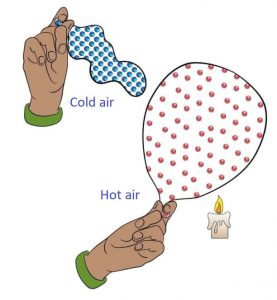
Expansion joints on sidewalks and roads
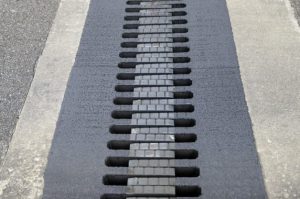
In the construction of sidewalks and roads, a margin is left for expansion joints, consisting of a separation between the slabs so that, when the temperature increases, they do not crack.
In concrete highways and bridges, spaces are left that are filled with flexible material or with expansion joints in the form of teeth that interlock, leaving spaces. In this way, there is a margin for the concrete to expand and contract with changes in temperature.
Glass fractures
Glass cracks under sudden changes in temperature. If a cold glass tumbler is filled with very hot water, the material heats unevenly, causing expansion in places, causing internal stresses that lead to fractures.
Contrary to popular belief, thick glass cracks more easily than thin glass. This is because the thinner the material, the more quickly and evenly heat is distributed, so there is no time for internal stresses to appear.
Water freezing
Water is an example of negative thermal expansion, that is, it expands when it cools, a phenomenon that occurs between 0 and 4ºC. As is known, when freezing a completely full water bottle, it will crack.
However, this quality of water makes it possible for the bottom of rivers and lakes not to freeze completely during winter, thus making aquatic life possible even at low temperatures.
Power lines
The power lines are not laid in a straight line between two poles, but rather leaving some room for them to hang down a bit, forming a curve. This is because when the weather gets very cold, the wiring tends to shrink.
On the other hand, when the weather is very hot, it is common to see that the power lines relax and hang a lot.
Rivets for aircraft
In airplanes, rivets made of aluminum are used to join the pieces, and they are always made larger than the corresponding hole. Then, before putting them in place, they must be contracted, cooling them with dry ice.
There are many reasons why rivets are preferred over welding for aircraft. For example, the type of aluminum used in aircraft manufacturing is difficult to weld, and even if successful, the weld ends up weakening the material. On the other hand, rivets are easier to inspect and repair than welds.
Exercise resolved
A thin rod made of bronze is 0.5 m long at 20.0 ° C. Calculate the length of the rod when it is heated to 50.0 ºC, knowing that the coefficient of linear expansion of bronze at 20 ºC is: 19 × 10 -6 ºC -1 .
Solution
Since the bar is thin, apply the equation for linear expansion:
L f = L o (1 + αΔT)
Just substitute the values that appear in the statement :
ΔT = (50.0 −20.0) ºC = 30.0 ºC
L f = 0.5 (1 + 19 × 10 -6 × 30) m = 0.500285 m
